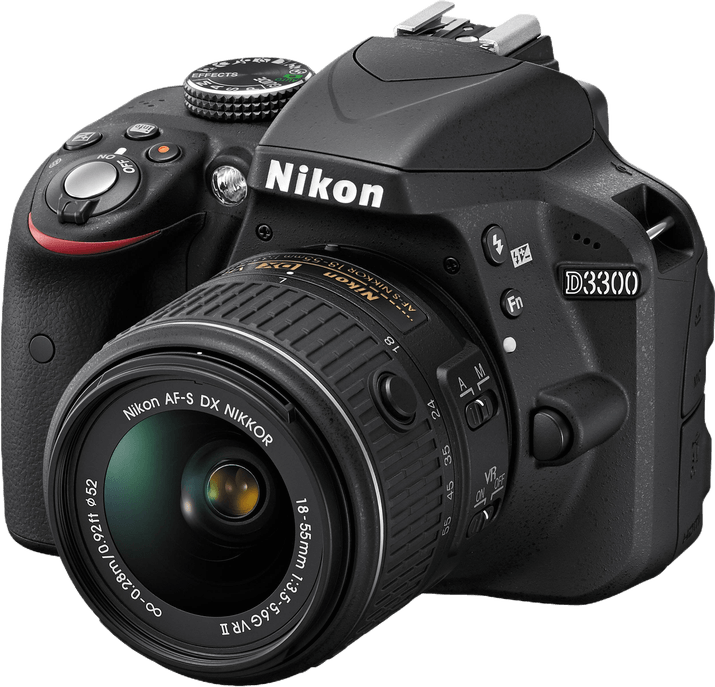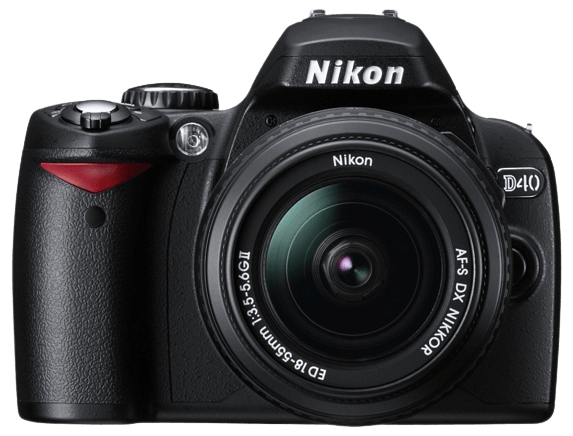Nikon D3300 vs D40 Comparison
Nikon D3300

Nikon D40

The Nikon D3300 outperforms the Nikon D40 with a score of 55/100 compared to the D40’s 28/100. Both cameras share similarities as DSLR cameras, with the same width of 124mm. However, the D3300 has a slight advantage in size, being 4mm taller and 12mm deeper than the D40. Additionally, the D3300 is lighter, weighing 430g, while the D40 weighs 522g.
Launched in 2014, the Nikon D3300 is a more recent model with a higher launch price of $650, compared to the D40’s $400 price in 2006. The D3300’s better score reflects the advancements in technology and features over the eight-year gap. Although the Nikon D40 has a lower score, its lower launch price may appeal to budget-conscious consumers.
Taking these factors into account, the Nikon D3300 stands out as a superior camera, offering a better overall performance and lighter, more compact design. However, the Nikon D40 might still be a viable option for those seeking a more affordable DSLR camera.
Nikon D3300 vs D40 Overview and Optics
The Nikon D3300 outperforms the Nikon D40 in optics, scoring 64/100 compared to the D40’s score of 33/100. Both cameras share some common specifications, such as the APS-C sensor size, Nikon F DX lens mount, and lack of image stabilisation.
The D3300’s superiority in optics is evident through its higher megapixel count of 24.2, compared to the D40’s 6 megapixels. This allows the D3300 to capture more detail and produce higher-resolution images. Additionally, the D3300 boasts a faster shooting speed of 5 frames per second, compared to the D40’s 2.5 frames per second. This enables users to capture fast-moving subjects more efficiently. The D3300 also has a more advanced CMOS sensor and Expeed 4 processor, resulting in better image quality and performance. Its DXOMARK sensor score of 82 further supports the D3300’s superior image quality compared to the D40’s score of 56.
The Nikon D40, on the other hand, does not offer any significant advantages in optics over the D3300. Its lower megapixel count, slower shooting speed, and older CCD sensor and image processing engine make it a less capable camera in terms of optics.
Considering the differences in specifications, it is clear that the Nikon D3300 offers better optical performance than the Nikon D40. With its higher megapixel count, faster shooting speed, and more advanced sensor and processor, the D3300 is the superior choice for photographers seeking better image quality and performance. The D40, with its lower score and dated specifications, falls short in comparison to the D3300.
Nikon D3300 vs D40 Video Performance
When comparing the video capabilities of the Nikon D3300 and the Nikon D40, it is important to note that the Nikon D40 does not have any video functionality. Therefore, this comparison will focus on the video capabilities of the Nikon D3300.
The Nikon D3300 has a video score of 56 out of 100. This camera can record videos in Full HD with a maximum resolution of 1920 x 1080 pixels. It also supports a maximum video frame rate of 60 frames per second. However, the Nikon D3300 does not have built-in time-lapse functionality.
Considering the video capabilities, the Nikon D3300 is the only option between these two cameras for those who require video recording features. While the Nikon D40 lacks video functionality entirely, the D3300 provides Full HD recording and a decent frame rate for capturing smooth footage.
Nikon D3300 vs D40 Features and Benefits
The Nikon D3300 emerges as the winner in the features comparison, with a score of 41 out of 100, while the Nikon D40 scores only 17 out of 100. Both cameras share several common features, such as the absence of a touchscreen, flip screen, GPS, WIFI, and Bluetooth. However, the D3300 surpasses the D40 in specific aspects, making it the superior choice.
The D3300 boasts a larger screen size of 3 inches, compared to the D40’s 2.5 inches. This difference allows for a more comfortable and clear image preview. Moreover, the D3300’s screen resolution of 921,000 dots is significantly higher than the D40’s 230,000 dots, contributing to a sharper and more detailed display. These advantages make the D3300 more user-friendly and efficient in terms of image viewing and menu navigation.
Despite the lower score, the D40 does not possess any distinct advantages over the D3300 in terms of features. The similarities between the two cameras do not provide any opportunity for the D40 to outshine the D3300, making it difficult to justify choosing the D40 over the D3300 based on features alone.
Taking all aspects into consideration, the Nikon D3300 is the better choice when comparing features between the two cameras. Its larger screen size and higher screen resolution significantly enhance the user experience, providing more detailed image previews and easier menu navigation. On the other hand, the Nikon D40 fails to present any notable advantages in this comparison, making it a less appealing option for potential buyers.
Nikon D3300 vs D40 Storage and Battery
The Nikon D3300 outperforms the Nikon D40 in storage and battery with a score of 32/100 compared to the D40’s 27/100. Both cameras have one memory card slot and do not support USB charging. They also share compatibility with SD and SDHC memory cards.
The D3300 surpasses the D40 in battery life, providing 700 shots per charge, while the D40 only offers 470 shots. This substantial difference gives the D3300 an advantage for extended shooting sessions. Additionally, the D3300 accepts SDXC memory cards, enabling users to store more photos and videos compared to the D40, which only accepts up to SDHC cards.
On the other hand, the D40 uses the EN-EL9 battery type, which may be more accessible and affordable for some users compared to the D3300’s EN-EL14a battery. However, this advantage does not outweigh the benefits of the D3300’s longer battery life and expanded storage options.
Considering these factors, the Nikon D3300 proves to be the superior choice for storage and battery performance, making it the better option for photographers who require extended shooting times and additional storage capacity.
Nikon D3300 vs D40 – Our Verdict
Are you still undecided about which camera is right for you? Have a look at these popular comparisons that feature the Nikon D3300 or the Nikon D40:
